-
Car Reviews
- Car News
-
Car Comparisons
Latest comparisons
- Chasing Deals
Volvo’s first all-new seven-seater in 10 years debuts as an electric-only flagship featuring premium hardware and technology. But is it good enough?
If there’s any category in the motoring world that’s currently light-on for contenders, it’s seven-seat electric SUVs.
First there was the (US only) Rivian R1S, then the Mercedes-Benz EQS SUV, the Kia EV9 and now the Volvo’s all-new, all-electric, XC90-replacing EX90.
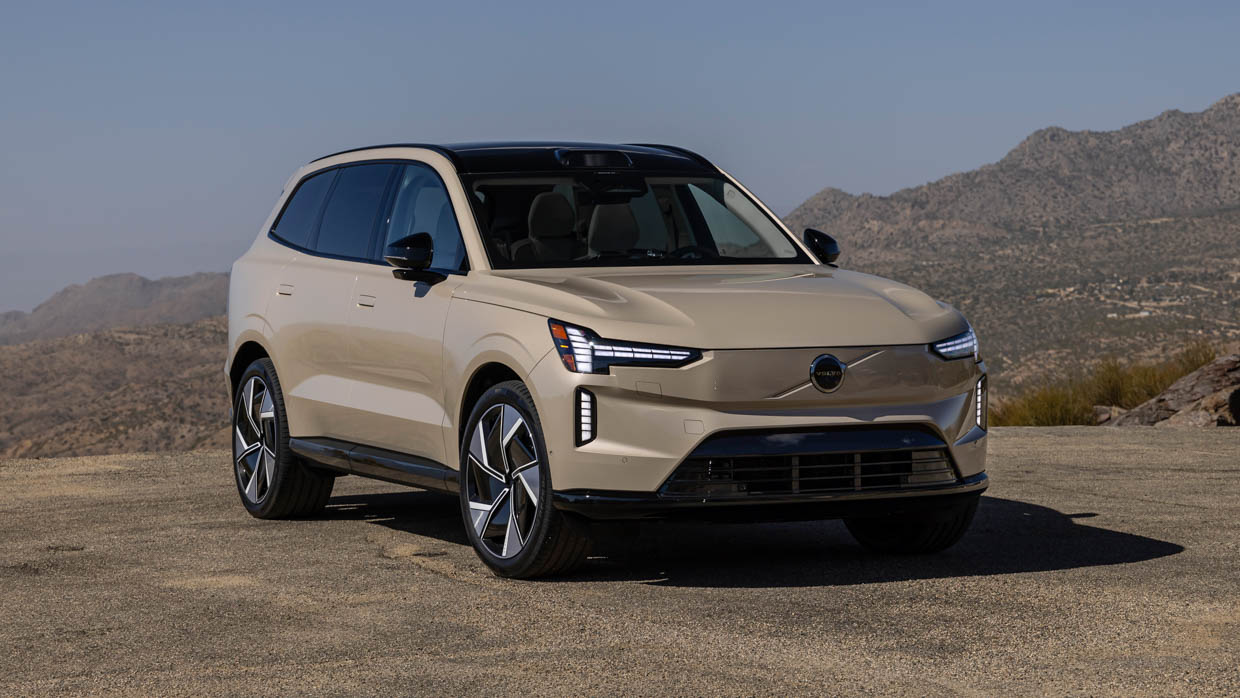
And while the Kia’s existence among those premium nameplates might seem a little odd, its GT-Line AWD flagship costs $121,000 before extras, which is surprisingly close to what Volvo expects its ($130K-ish) EX90 Ultra Performance AWD flagship will cost once it launches locally later this year.
The EX90 does have some inter-family rivalry, however, in the form of the five-seat Polestar 3 which shares its EV architecture, suspension hardware, and wheelbase length with the EX90, and kicks off at $141,900 for the equivalent Performance Pack AWD. So large electric SUVs are clearly growing in numbers – meaning the EX90’s (delayed) arrival couldn’t be better timed.
Styling-wise, the electric EX90 is essentially a post-modern interpretation of the second-gen XC90, both in its overall form and even its proportions.
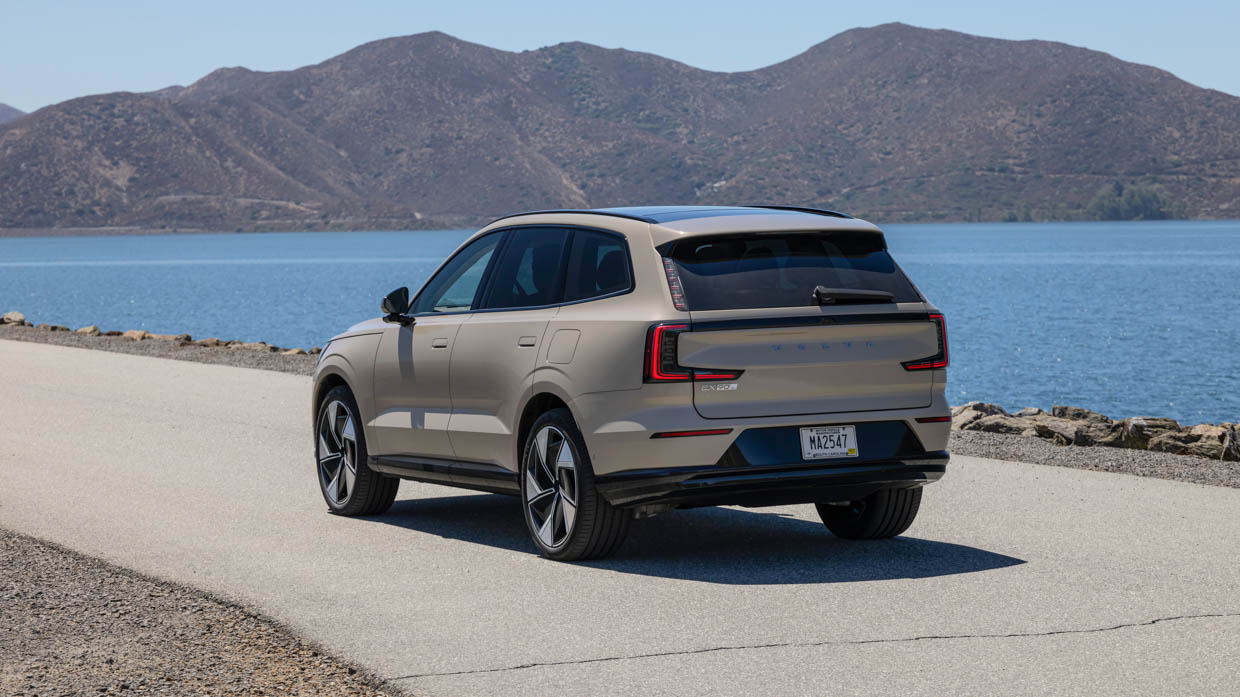
Dimensionally, it virtually mirrors the combustion-engined XC90 – riding on a near-identical 2985mm wheelbase, while measuring 87mm longer (5037mm), 41mm wider (1964mm) and 28mm lower.
But that leaves the EX90 at a modest size disadvantage to the current premium-brand seven-seat king – the Audi Q7 – and its wheelbase length is dwarfed by the Kia EV9’s enormous 3100mm footprint, all of which affect its interior room to some extent.
There’s a distinctive Volvo aesthetic inside the EX90, however, which expertly blends a breezy, minimalist feel with slickly integrated technology, nicely tactile surfaces, distinctly Scando light-wood finishes (that transform into geometric patterns with yellow backlighting at night). And in the case of our test car, there’s a pleasingly warm Wool Blend upholstery that’s constructed of humanely sourced sheepskin and 100-percent recycled polyester.
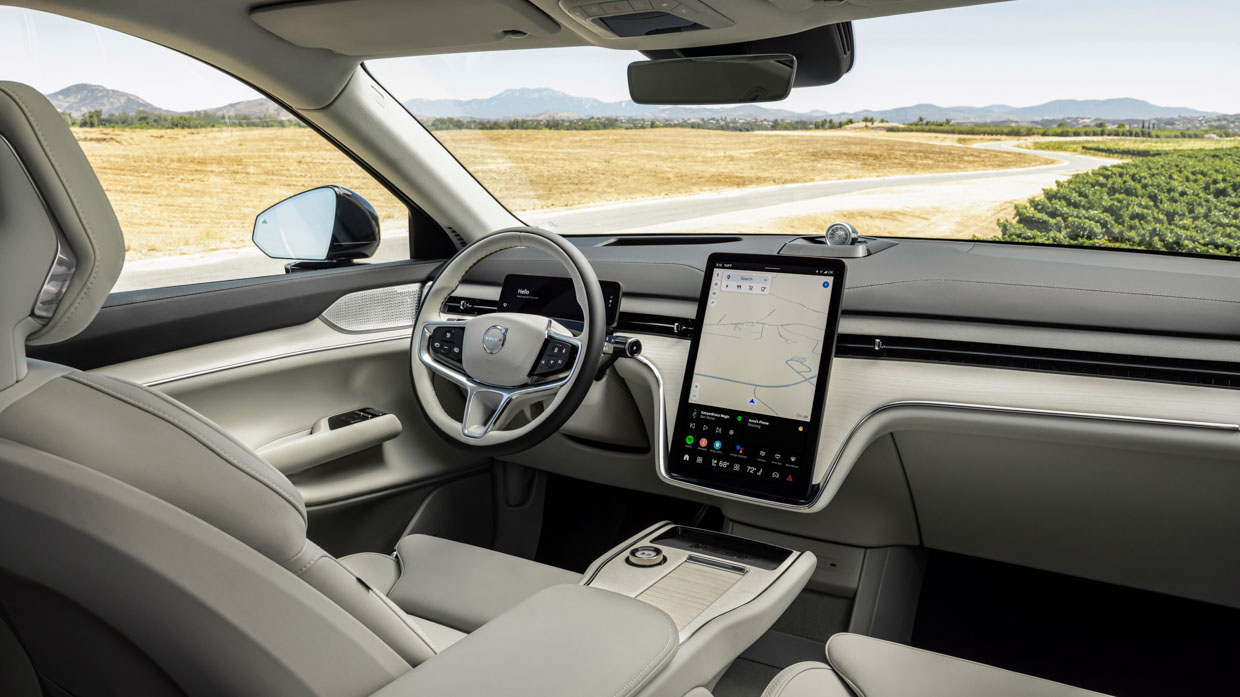
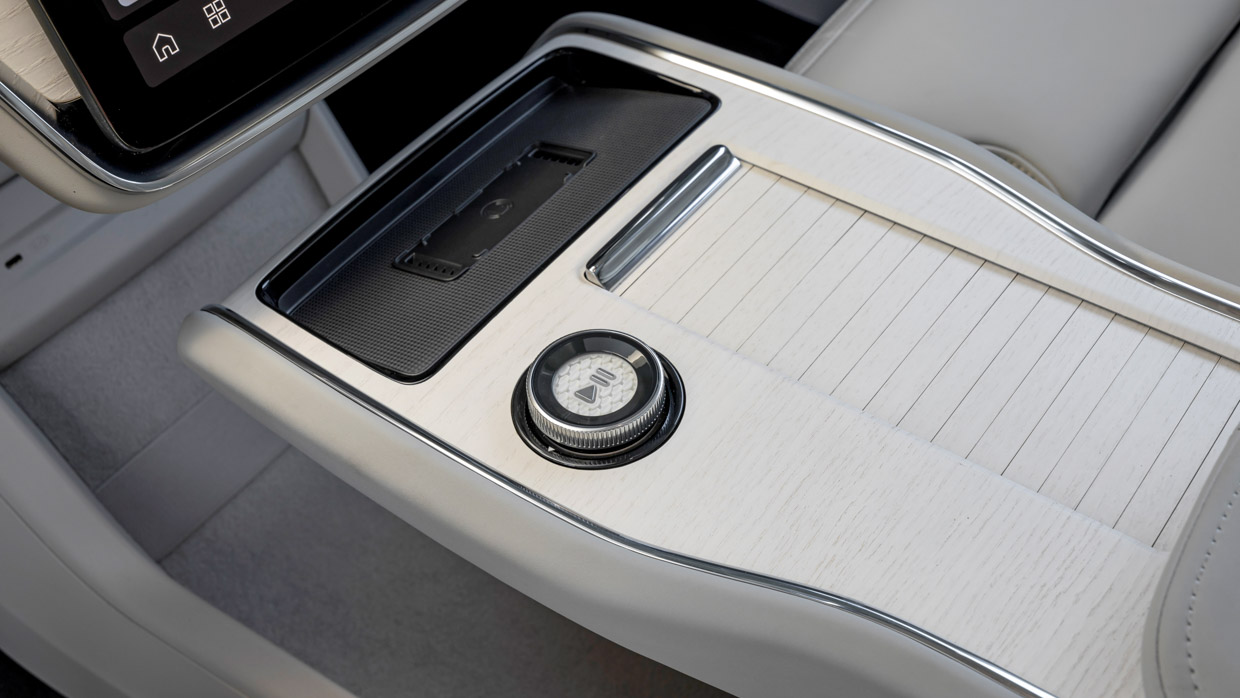
Materials and construction quality appears up to Volvo’s usual standard, however the EX90’s doors sound a little hollow when forcefully closed (they do have a soft-close function if you’re gentle) and there’s some decontenting evident in how it lacks the XC90’s proper door grab handles and bottle storage (EX90 will only take 600ml bottles), as well as its roof grab handles lovingly crafted in stitched upholstery (EX90 has none).
Nit-picking aside, the EX90’s electric front buckets are comfortably supportive, even though they lack the XC90’s dedicated under-thigh tilt (all seat movement is controlled by a single, minimalist dial). At least they retain manual under-thigh extenders.
There’s plenty of storage in the centre-console area, with a deep tray underneath a cantilevered upper section. And the EX90’s in-cabin tech is classily rendered and reasonably intuitive, despite some touchscreen functions (such as suspension modes and braking regeneration levels) being buried beneath too many layers for ultimate driving ease (and safety).
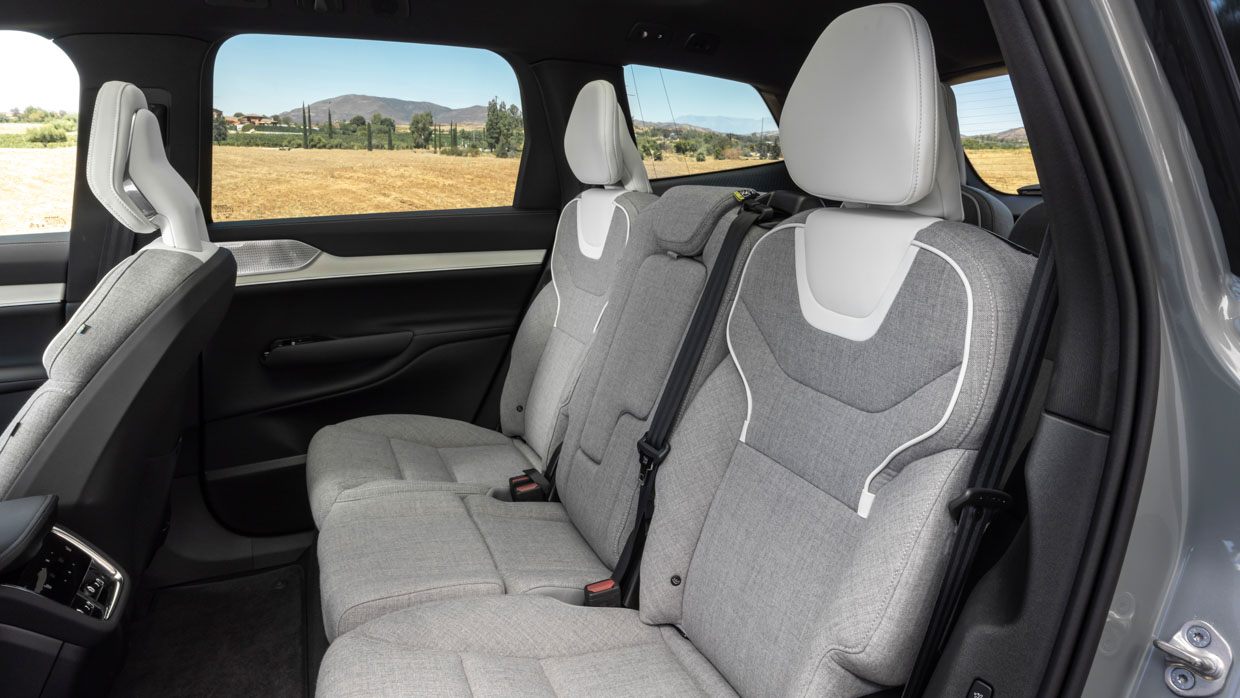
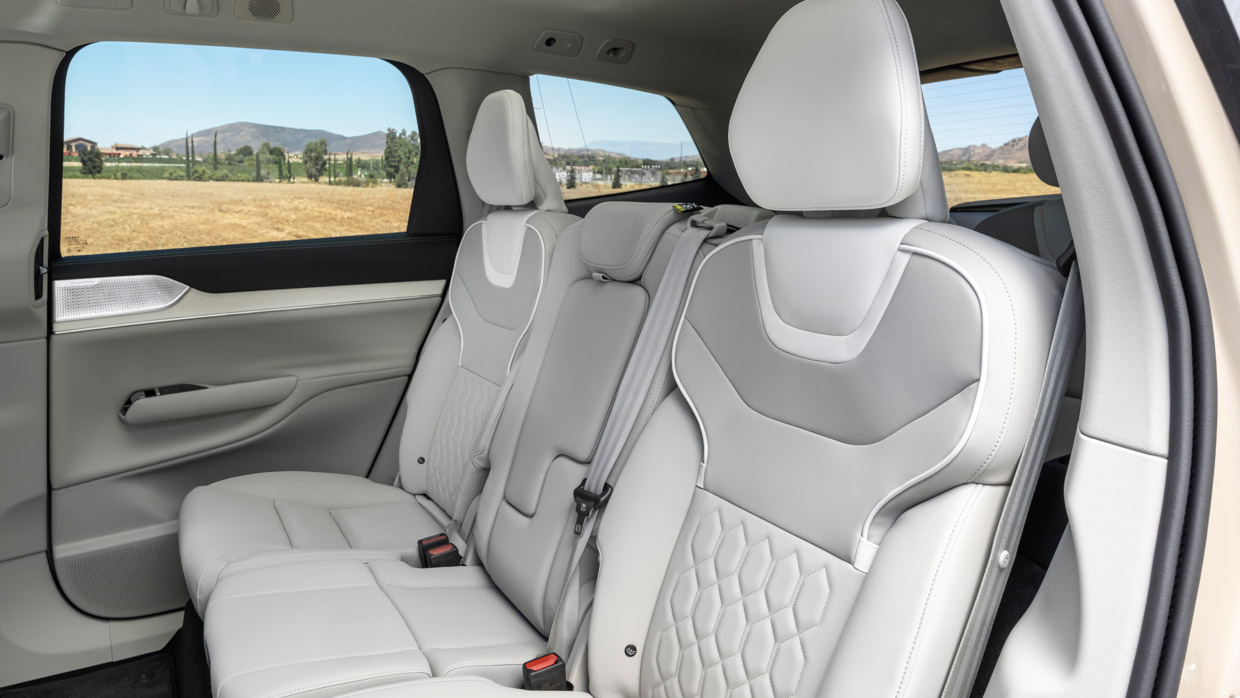
The second row offers three individually adjustable seats that are comfortable, yet only modestly sized – especially the centre seat – with adjustable backrest rake and outboard heating. These combine with a fully flat floor, dual-zone rear climate control (with B-pillar and central vents for the second row, plus C-pillar vents for the third row), door sunshades and, ironically, an all-glass roof without any existing capability of electro-chromatic tinting to prevent heat soak on hot days.
Third-row access is relatively simple, however the space is clearly intended for children rather than adults on lengthier trips, even though all-round vision is pretty good.
And if you need to lower the third-row seats from the cabin, you can do so via electric buttons in the rear door frames, expanding boot volume from 324 litres (including under-floor storage) with all seven seats in use to a solid 669 litres as a five-seater.
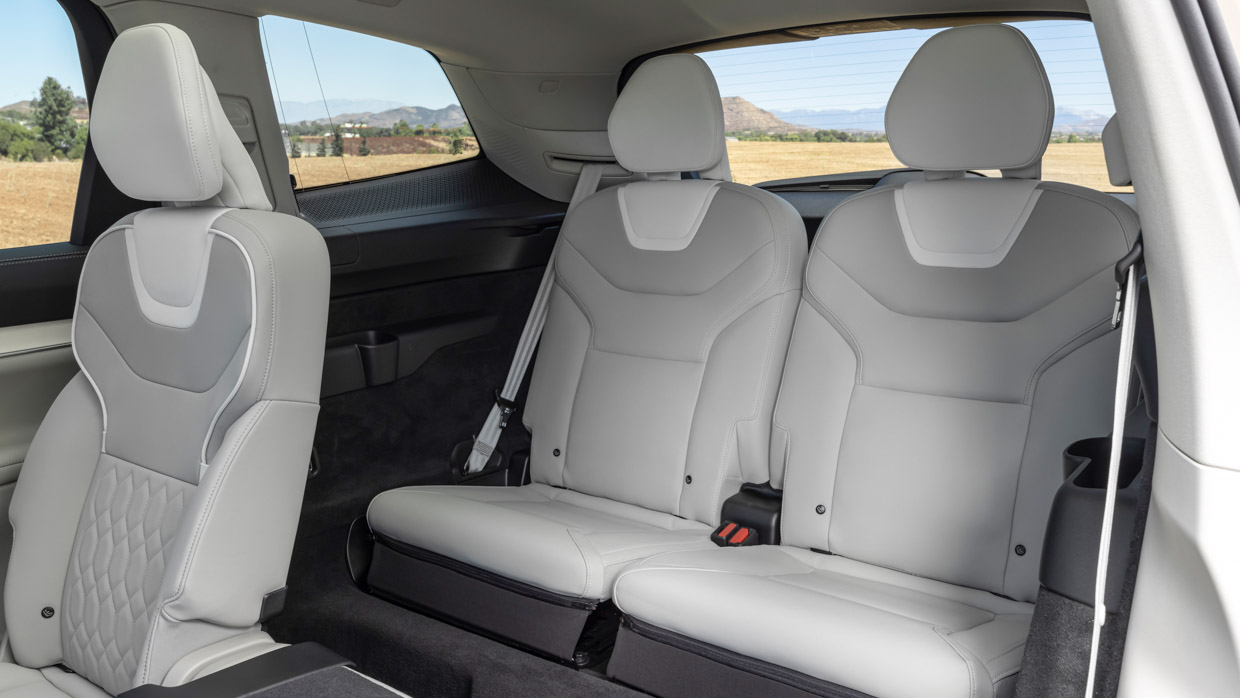
While the EX90’s capabilities as a luxurious seven-seat SUV are perhaps a degree shy of being genuinely impressive, its excellence when it comes to on-road purchase and performance more than compensates.
Featuring adaptive air suspension with dual-chamber air springs in our Ultra Performance AWD test car, as well as a torque-vectoring dual-clutch rear axle, the dual-motor EX90’s sophisticated hardware results in a premium level of dynamic consistency and capability.
Even wearing 22-inch alloys with staggered-width Pirelli Scorpion tyres (huge 295/35R22s at the rear), the flagship EX90 proved impressively impervious on southern California’s expansion-jointed freeways and through its twisting, mountainous national parks.
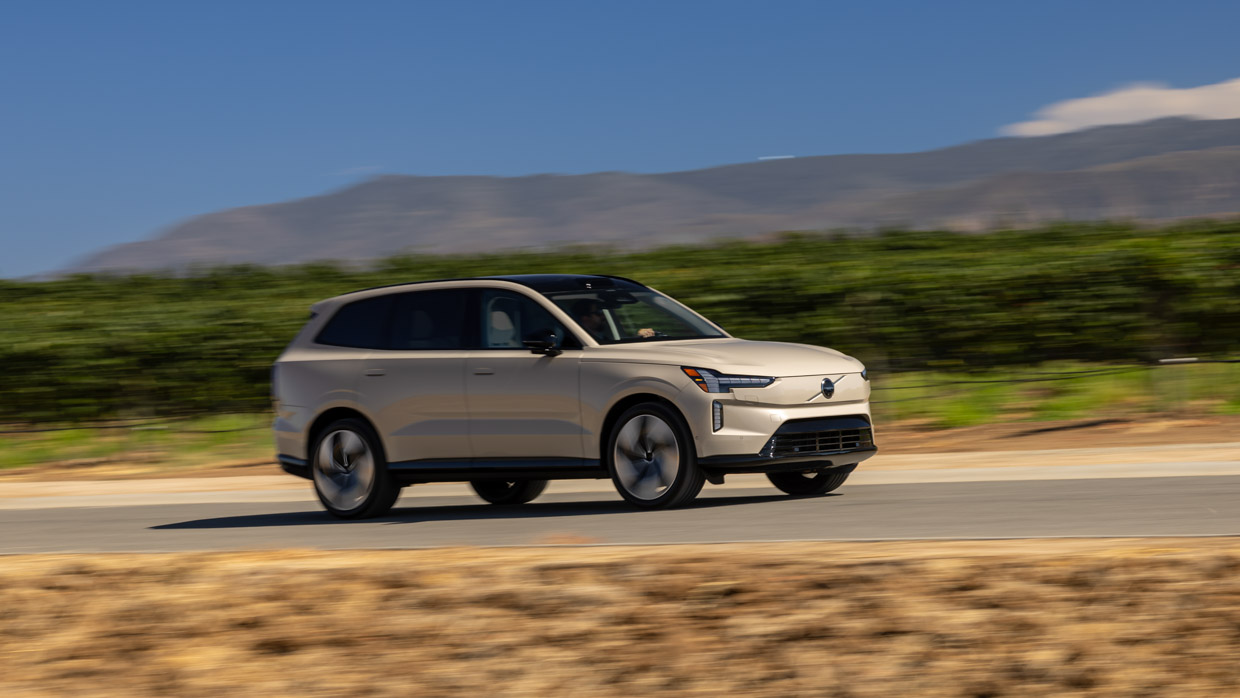
The EX90 offers two suspension settings (Soft and Firm) that can be height adjusted across a 40mm range (from 210 to 250mm ground clearance). Soft feels pleasingly absorbent yet also impressively controlled, while Firm offers greater agility and discipline without becoming unyieldingly stiff.
Even with just two settings, the EX90 offers a rare combination of body control and passenger comfort, regardless of the chosen mode. And while its electric steering isn’t packed with feel, it’s light, crisp and accurate, guided by a lovely small steering wheel.
Much like the related Polestar 3, the EX90 transcends its considerable 2712kg heft via a low centre of gravity, near-perfect weight distribution, and the clever torque-vectoring Borg-Warner dual-clutch rear differential that can send up to 100 percent of drive to either rear wheel. It all blends together to endow the top-spec EX90 with a level of poise and fluency that should translate well on Aussie surfaces.
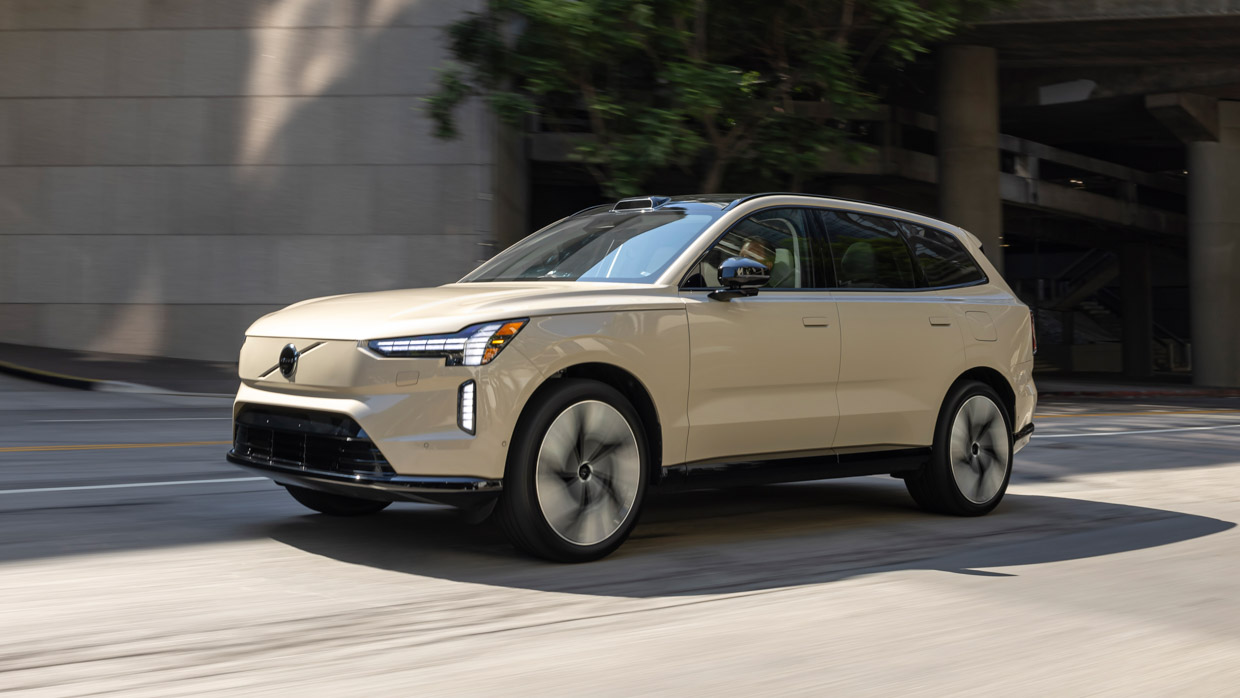
Regenerative braking performance is also a feather in the EX90’s cap – allowing it to come to a full stop – though it should really be adjustable via paddles on the steering wheel, not buried among menus in the 14.5-inch centre touchscreen, much like the suspension modes.
When you hit the go pedal, however, the appropriately named Ultra Performance does indeed achieve what it (invisibly) says on the tin, offering ample grunt for an electric seven-seater.
The EX90 shares its 400-volt electrical architecture, 111kWh nickel-manganese-cobalt battery, and 380kW/910Nm outputs with the Polestar 3 Performance Pack, and even though it weighs (and carries) more, its 4.9sec claimed 0-100km/h time almost matches the Polestar’s. It’s also nearly half a second quicker than an EV9 GT-Line in Boost mode.
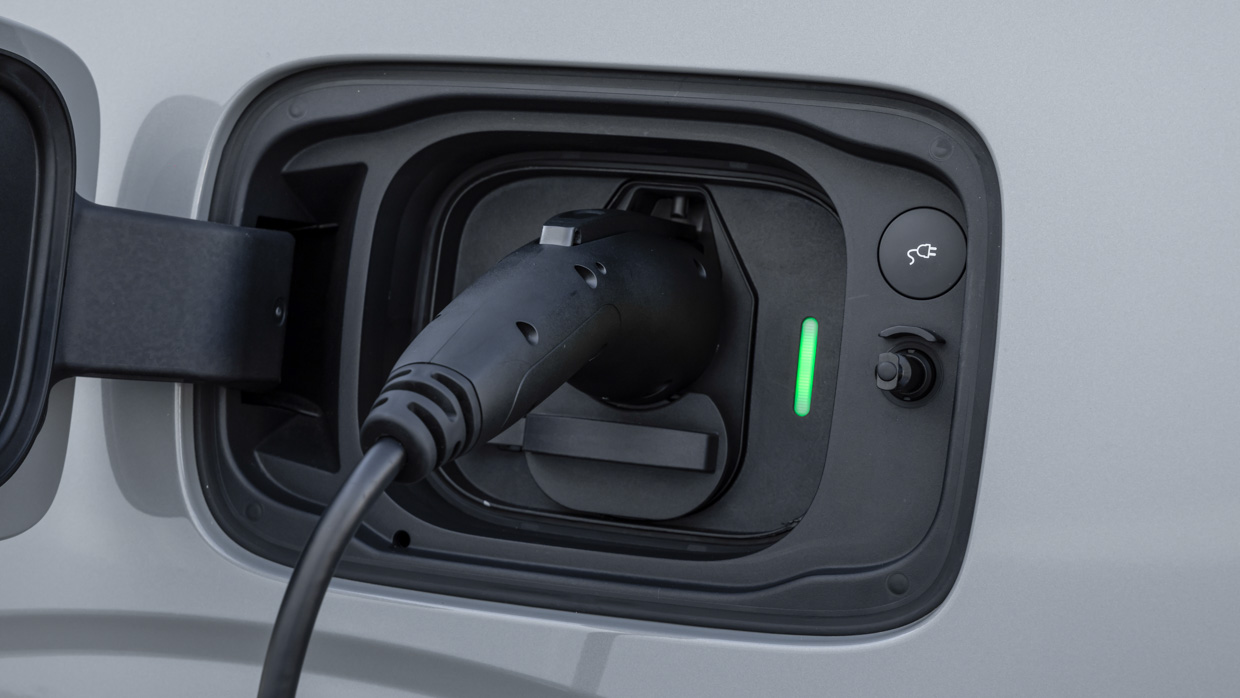
To unleash the full force of its potential, you need to select ‘Performance AWD’ (via an easy-to-locate icon on the touchscreen) which transforms the EX90’s foot-flat punch from a softly linear swell in acceleration to a light-switch response that pins you into the seat – backed by a crisply quiet soundtrack.
Charging-wise, the EX90 can handle up to 250kW DC, with a claimed 10-80 percent charge time of 30 minutes. Volvo communicated a WLTP range of 570-614km (depending on options and wheel size) for the Ultra Performance AWD, though we averaged 25.0kWh/100km over several hundred enthusiastic kays, which calculated to a real-world range of 428km.
During that time, we found the EX90’s comprehensive safety systems worked with impressive subtlety and surety, particularly its lane-keep assistance and well-calibrated adaptive-cruise control when belting along at 130km/h on hilly southern Californian freeways.
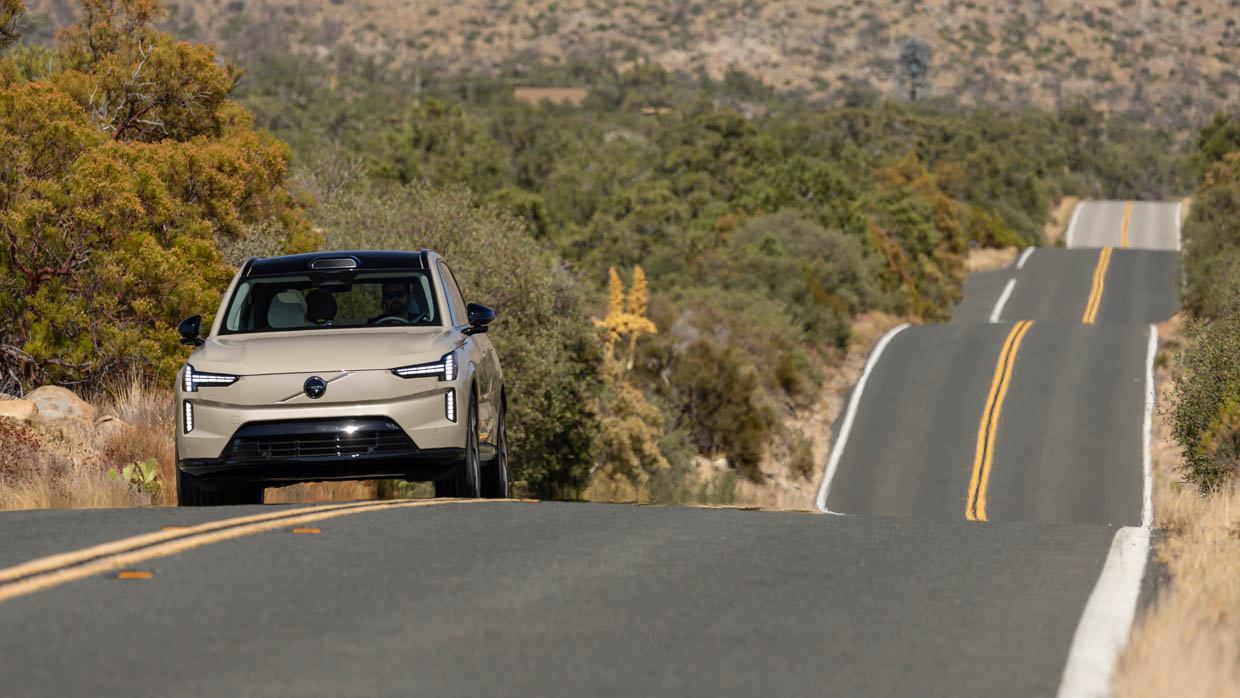
And if you turn lane-keep off, it remains off next time you start the EX90, which also applies to the suspension mode, where it will remain in either Soft or Firm until you change it yourself, rather than defaulting to one or the other.
So has the Volvo EX90 been worth the two-year wait? It first appeared in November 2022 but has taken until mid-’24 to reach full production, initially in South Carolina in the US, and soon in China (which will supply our market).
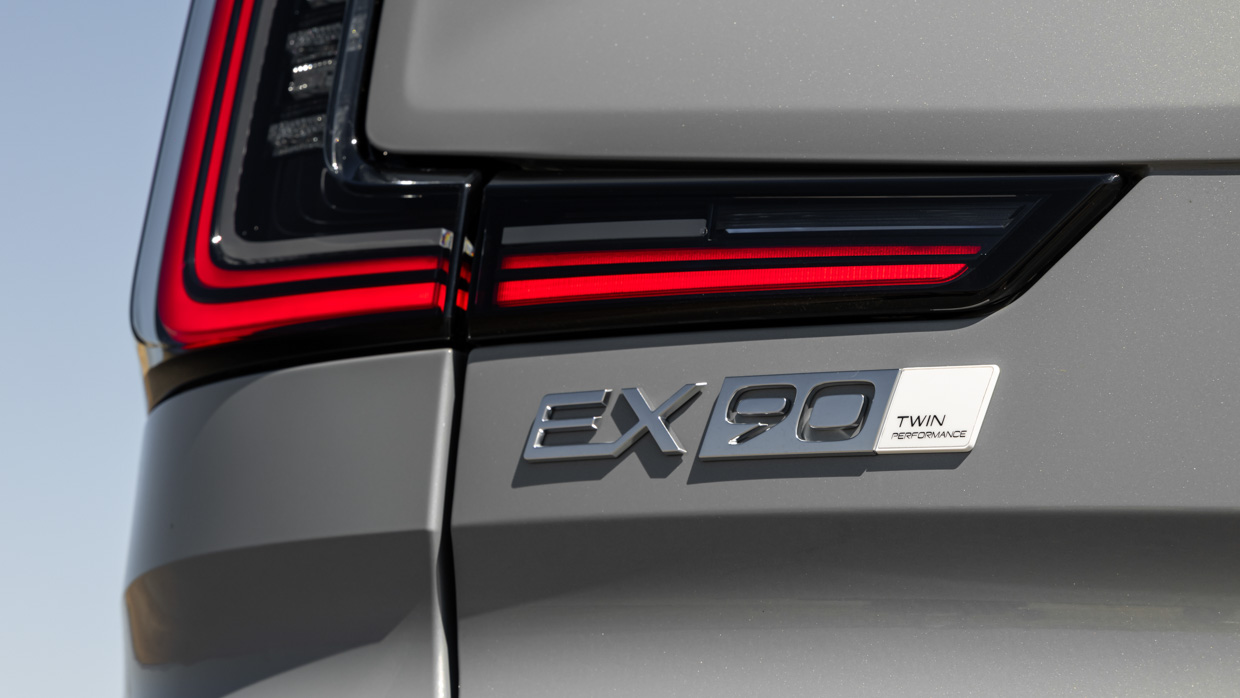
Even so, the EX90 launch cars still required further calibration, particularly the phone-prioritised keyless entry system that proved consistently glitch-prone. But Volvo listened intently to our gripes and even took notes, which bodes well for the possibility of over-the-air-updates reflashing the touchscreens electronic functions.
In taking on the development of all the electrical architecture itself, rather than farming it out to suppliers, Volvo admits that it has been learning as it goes – hence the delay in the arrival of both the Volvo EX90 and its technical cousin the Polestar 3.
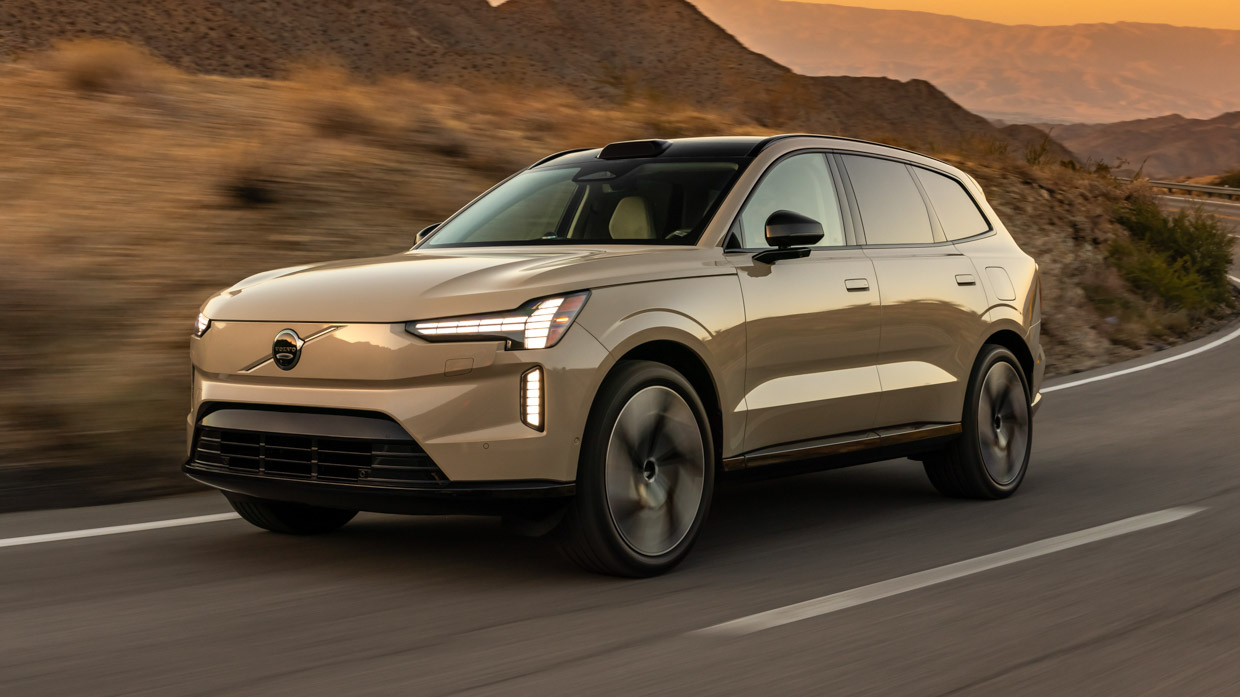
But the Swedes assured us that final-production EX90s will have their electronic foibles solved because they want the EX90 to be as good as it can be. Which it very much needs to be.
As I write this, Australian pricing is yet to be announced, however you can expect the Ultra Performance AWD to be priced somewhere around the $130,000 mark (before options) when it goes on sale here before the end of this year.
That’s a sizeable sum for a sizeable SUV, though as the Kia EV9 has proved, people are willing to pay $120K-plus for an electric seven-seat SUV, even without premium brand cachet. Yet in the case of the Volvo EX90, it seems the more you ask of it – at least dynamically – the better it gets.
About Chasing cars
Chasing Cars reviews are 100% independent.
Because we are powered by Budget Direct Insurance, we don’t receive advertising or sales revenue from car manufacturers.
We’re truly independent – giving you Australia’s best car reviews.
The estimate provided does not take into account your personal circumstances but is intended to give a general indication of the cost of insurance, in order to obtain a complete quote, please visit www.budgetdirect.com.au. Estimate includes 15%^ online discount.
^Conditions Apply
Budget Direct Insurance arranged by Auto & General Services Pty Ltd ACN 003 617 909(AGS) AFSL 241 411, for and on behalf of the insurer, Auto & General Insurance Company Limited(ABN 42 111 586 353, AFSL 285 571).Because we don’t know your financial needs, we can’t advise you if this insurance will suit you. You should consider your needs and the Product Disclosure Statement before making a decision to buy insurance. Terms and conditions apply.
Indicative quote based on assumptions including postcode , 40 year old male with no offences, licence suspensions or claims in the last 5 years, a NCD Rating 1 and no younger drivers listed. White car, driven up to 10,000kms a year, unfinanced, with no modifications, factory options and/or non-standard accessories, private use only and garaged at night.
^Online Discounts Terms & Conditions
1. Discounts apply to the premium paid for a new Budget Direct Gold Comprehensive Car Insurance, Third Party Property Only or Third Party Property, Fire & Theft Insurance policy initiated online on or after 29 March 2017. Discounts do not apply to optional Roadside Assistance.
2. Discounts do not apply to any renewal offer of insurance.
3. Discounts only apply to the insurance portion of the premium. Discounts are applied before government charges, taxes, levies and fees, including instalment processing fees (as applicable). The full extent of discounts may therefore be impacted.
4. We reserve the right to change the offer without notice.